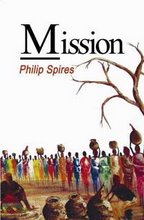So, what we heard last night in a performance by the ADDA orchestra in Alicante was, in all but name, a rather conventional Romantic symphony following the usual four movement pattern of allegro, adagio, scherzo and allegro-finale. The fact that it was titled Concerto for Orchestra indicates that the composer tried to highlight the individual sonorities and capabilities of each instrument and instrumental grouping of the orchestra. And the composer did just that. The fourth movement, for instance, starts with effectively a string quartet which, late Shostakovich style, angularly introduces the themes of the fugue that builds via woodwind to an orchestral tutti. The writing for timpani in this section is prominent. Zhou Tian explains that ‘in the fourth a fugue builds’ where ‘occasional touches of jazz syncopation and harmony are mixed with folksy tunes in perpetual motion’.
But there are also difficulties for the listener. In the first movement, for instance, alongside orchestral climaxes, the harp is playing arpeggios that cannot possibly be heard. Later on, the composer does make use of the harp’s individual sonority. Overall, I found that contrasting sonorities were often lost in a similar broad brush of orchestral colour. In that first movement, Zhou Tian states that ‘Keen listeners may discover hidden homages to some of the great concerti for orchestra from the past.’ I did find myself sifting through memories to locate references, but, as will be seen later, my mind was otherwise engaged. One did sense that the composer, however, did use quotation liberally, even, at one stage near the end, Messiaen’s Turangalila.
Of the second movement, the composer says that ‘Plush strings, lyrical oboe solo, dashing flutes and harp, and dark brass paint shades of blue into indigo…’ The use of colour to express sound is relevant here in a movement that sounds like it could have been written at any time in the last century, or perhaps before.
There follows a conventional short scherzo. The third movement ‘draws inspiration from the classical form while incorporating new turns and twists, constantly exploring different colors and timbre’. Zhou Tian used the term ‘a retro miniature’ in his own description, and apart from ‘miniature’ hardly applying to a work scored for large forces, the term ‘retro’ could be applied to the whole work. Stylistically, it might draw on jazz, popular music, film music and other things, but essentially this is music of and from the past. It is no criticism to state that, but anyone coming to a work written in the last ten years and seeking something more “cutting edge” is going to be disappointed. The overall, impression of the work is both competent and exciting, but perhaps falling short of the memorable.
There followed an encore that conductor Darrell Ang described as a present from China, a piece that is played whenever there is something to celebrate. It was rousing.
In the first half we had heard Brahms Piano Concerto No1 played by Albert Guinovart. The soloist was a last-minute replacement for Judith Jáuregi, who was ill. At such short notice, Albert Guinovart did a superhuman job. This work is no mean feat for anyone, let alone someone who has had a minimal amount of time to prepare. The ADDA audience was wholly appreciative of the soloist’s efforts and the performance was enjoyed by all.
Albert Guinovart offered two short preludes of his own composition as an encore, the first a homage to Chopin, the second, as he himself described it, “original”. It was here that for just a short while we heard the true artistry of the performer. As ever, of course, and throughout, the ADDA orchestra was superb.
My own mind from the
start was somewhat distracted by the trills that Brahms used to open the work.
My mind immediately recalled another piece, but what? I have to admit that I
spent much of the first half sifting through my musical memory to locate it,
but locate it I did. Those trills are reminiscent of the opening of Berthold
Goldschmidt’s opera Beatrice Cenci, so similar in fact that the later composer
must have had the Brahms in mind when he wrote the score in 1949. The work
waited until 1988 for a first performance and was not staged until 1994. It is,
for the record, written in a late-Romantic style that very much pre-dated the
year of its composition. The memory itself proved prescient.



















